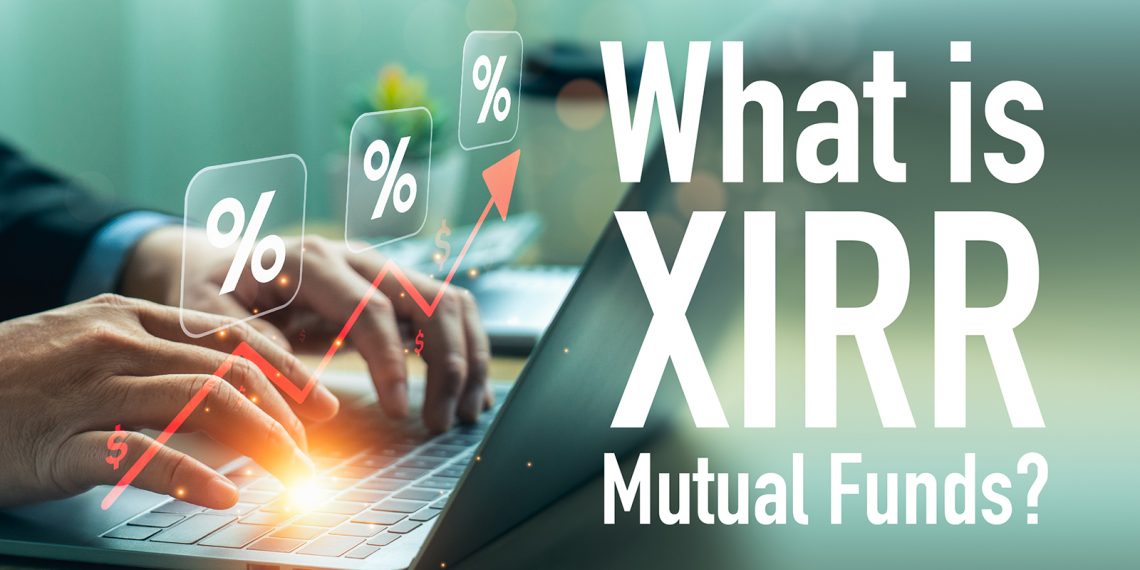XIRR stands for ‘Extended Internal Rate of Return’ which is a great tool for quantifying the earnings from a mutual fund. In contrast to regular computation of returns, XIRR takes into account the timing and amounts of every investment and withdrawal contributing to the more reliable overall net value of your portfolio performance.
What is XIRR?
XIRR is a financial metric used to find out the overall annualized return for a number of investments, including trading size and timing issues. It gives a better idea about returns on investments than simple calculations of returns and involves more accurate measurements.
How to Calculate XIRR?
In order to apply XIRR, you need to have data on the dates and amounts of your investments as well as the dates and amounts of withdrawals. You can either work out XIRR manually using financial software as well as online calculators or you can use the XIRR function in spreadsheet software like Microsoft Excel if you are not comfortable with doing it manually.
Advantages of XIRR applicability in Mutual Funds Investment process.
- Accurate Performance Measurement: XIRR takes into account not only the timing and the amount of cash flows, but also provides a more useful estimate of your investment performance, as you can compare different investment opportunities more fully.
- Comparison Across Investments: XIRR makes it possible to view different mutual fund investments as an uniting whole, observing their cash flow patterns individually.
- Decision Making: XIRR can assist you in making the right decision in terms of whether you can stick to a certain investment or you need alternatively to buy or sell it.
How to Use XIRR for Your Mutual Fund Portfolio
- Regular Tracking: Determine XIRR periodically to monitor how your mutual funds’ performance results have grown.
- Portfolio Optimization: Adapt XIRR to find weak positions and determine what actions you should take to improve your portfolio.
- Goal Planning: With XIRR, you can quickly clarify if your investments are doing what you expected them to or not.
XIRR Calculator
These you can easily accomplish through excel and inputting this formula. XIRR is a computing function provided by excel and is often used for the purpose of computing the annual yield for a schedule at irregular periods of time.
Step by Step Process to Calculate XIRR in Excel:
Enter the Cash Flows: Open a new Excel worksheet on the table and prepare the cash flows into two columns. In the left column, put in the cash flow data (cash allocation in investment and return in the income), and in the opposite column, enter the corresponding dates of the cash flow transactions.
Insert the XIRR Formula: Concerning the cell where you’re looking forward to the XIRR result to be displayed, the XIRR formula should be introduced. The syntax of the XIRR formula is: Finish operation: XIRR (value, dates, guess).
Value: In your example workbook, this is the range highlighted in yellow.
Dates: The given table shows for the specific financial movement dates corresponding each cash flow.
Guess: This is an optional parameter which you will give as your assumed rate of returns. Populate 0.1 (10%) into the first line as your best guess.
Example of How to Use the Function in Excel:
SIP amount: ₹ 5000
SIP investment dates: 01/01/2017 – 01/06/2017
Redemption date: 01/07/2017
Maturity amount: ₹ 31000
Calculate XIRR: Redefine the XIRR formula in a cell say, =XIRR(B2:B7, A2:A7, 0.1) where B2:B7 takes the place of cash flow amounts and A2:A7 for dates.
Result: Through the XIRR function, it returns the annual rate of return for the given cash flows. For this example, the given cash flows stand for the annual rate of return for the SIP investment.
To calculate XIRR, investments should be marked as outflow (-ve) and returns should be marked as return (+ve) since XIRR is related to flow of cash. In this specific example, SIP of Rs 5,000 to be marked as negative and return of Rs 31,000 to marked as positive.
Excel’s XIRR function will allow you not only to speed up the process of the calculation but also to reduce calculations errors when calculating the annualized rate of return for your mutual fund investments with the non-uniform cash flow.
Note: Excel will present the same result if SIPs are marked positive and returns are marked as negative. (It will consider SIP as initial inflow and returns as final outflow; i.e. implied flow stays the same)
Conclusion
XIRR is a tool that exercises relevance for investors who would want to obtain viable information on how well their investments are performing in respect to mutual funds. Knowing and operated the XIRR will enable you to decide on which investments you can take that in turn becomes proceeding on the goal you managed to set.
FAQ’s:
1) What makes XRR different from the other types of return calculations?
XIRR is a financial measure which calculates the annualized rate of return for a number of investments by taking into account the periods and amounts of each investment. It is different to the return measure that does not include the cash flows timing in the assessment.
2) How is the XIRR useful for the mutual funds investments?
XIRR is important since it enables a more precise measure of the investment result, taking into account the order and the size of cash flows when making a conversion.
3) How often should I use XIRR calculations for my mutual fund portfolio?
It will make sense to take advantage of the XIRR functionality every month or a quarter to find out where your investments are moving.
4) Can I use XIRR for other unconventional investments, as well?
Sure, XIRR can be implemented for other types of investments, for example shares, bonds, real estate as long as you have the relevant data to produce the statistic.
5) What do I need to do if my results from the XIRR are lower than assumed?
Furthermore, if XIRR is less than what you expected it is necessary to examine your investment strategy and to undertake the changes of the portfolio for better performance.
Source/Disclaimer : MOAMC Research & NSE (Data as of 29-Feb-2024; for period June 1999 to Feb 2024).
Disclaimer: This publication is pursuant to Investor Education and Awareness Initiative by Motilal Oswal Mutual Fund. This shall not be construed as offer to invest in any financial product or Scheme. The objective of this publication is restricted to informational purposes only. All investors have to go through a one-time KYC (Know Your Customer) process. For further details on KYC, Change of address, phone number, bank details etc. list of SEBI registered Mutual Funds and redressal of complaints including details about SEBI SCORES portal, visit link https://www.motilaloswalmf.com//New_Page/KYC-and-Redressal-of Complaints/9, SMART ODR portal, visit link https://smartodr.in/login. Investors should invest only with SEBI registered Mutual Funds details of which can be verified on the SEBI website under “SEBI Intermediaries/ Market Infrastructure Institutions.” This has been issued on the basis of internal data, publicly available information and other sources believed to be reliable. The information contained in this document is for general purposes only and not a complete disclosure of every material fact. The information/data herein alone is not sufficient and shouldn’t be used for the development or implementation of an investment strategy. It should not be construed as investment advice to any party the blog does not warrant the completeness or accuracy of the information and disclaims all liabilities, losses and damages arising out of the use of this information. Mutual Funds are subject to market risk. Read the offer documents before investing. Readers shall be fully responsible/liable for any investment decision taken on the basis of this article.
Mutual Fund investments are subject to market risks, read all scheme related documents carefully.








































